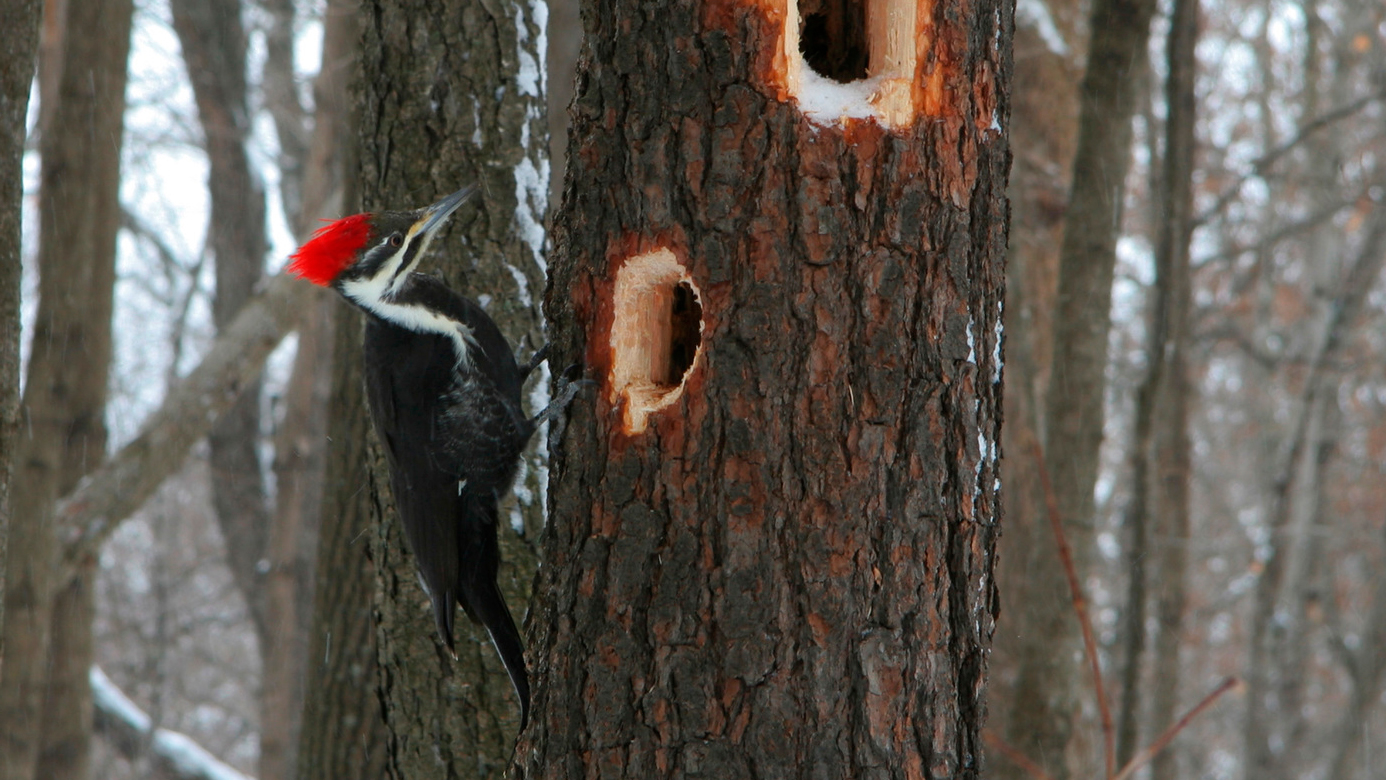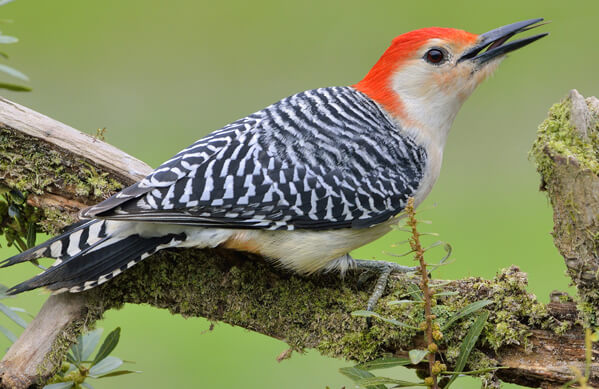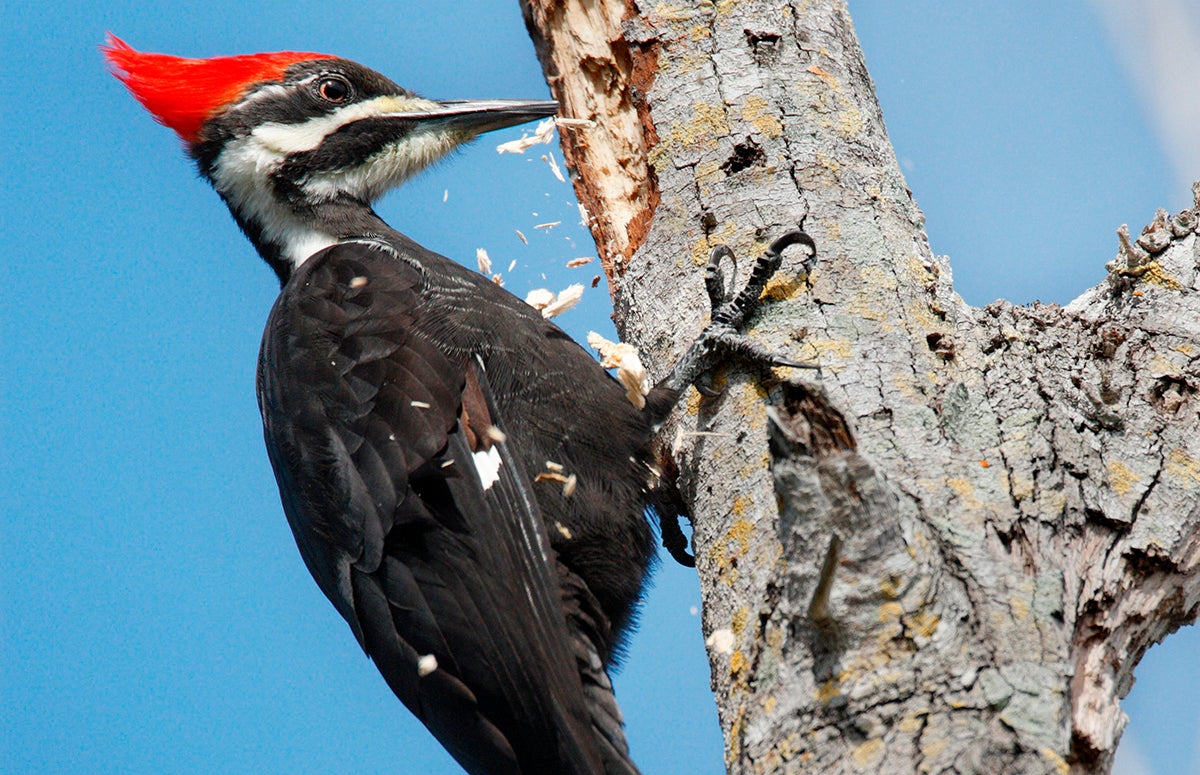Woodpeckers in Florida: Identification Tips and Environment Preferences
Woodpeckers in Florida: Identification Tips and Environment Preferences
Blog Article
Woodpeckers: A Comprehensive Guide to Understanding These Unique Birds
Woodpeckers, with their distinctive behaviors and physical characteristics, have actually long mesmerized the inquisitiveness of ornithologists and nature fanatics alike. From their rhythmic drumming resembling with the woods to their remarkable adjustments for scaling tree trunks effortlessly, these birds offer a fascinating study in bird biology. What really sets woodpeckers apart is not just their striking appearance however likewise their crucial function in preserving the delicate equilibrium of ecosystems. As we discover the elaborate anatomy, varied types, and ecological relevance of woodpeckers, a deeper appreciation for these special birds and the secrets they hold unravels.

Woodpeckers' Drumming Habits
Woodpeckers display a balanced and precise drumming actions that offers various essential features in their day-to-days live. This habits is primarily connected with communication, region defense, and foraging. The unique drumming sound is developed by the fast pecking of their beaks against difficult surface areas such as tree trunks, branches, or perhaps metal objects.
Communication is an important aspect of woodpecker habits, and drumming plays a substantial role in this procedure. Woodpeckers utilize drumming to establish their visibility, draw in companions, and maintain call with their companions and children. The frequency, strength, and period of drumming sequences convey details messages to various other woodpeckers in the area.
In enhancement to interaction, woodpeckers use drumming actions for area defense. Woodpeckers in Florida. The loud and recurring drumming acts as an advising to prospective burglars, indicating that the area is currently claimed. By developing their territory via drumming, woodpeckers decrease the likelihood of disputes over beneficial resources such as food and nesting websites
Furthermore, woodpeckers additionally utilize drumming as a foraging strategy. The rhythmic pecking helps them situate bugs concealing below the bark of trees by developing vibrations that interfere with the prey's cover-up. This actions showcases the versatility and ingenuity of woodpeckers in utilizing their drumming abilities for multiple necessary purposes.
Special Adjustments for Tree Climbing
Having grasped the art of drumming to connect, safeguard area, and forage, woodpeckers have actually evolved special adjustments that facilitate their exceptional climbing up abilities in their arboreal habitats. One crucial adjustment is their specialized feet. Woodpeckers have zygodactyl feet, with two toes directing onward and two toes pointing backwards. This setup provides a solid grasp on the vertical surfaces of trees, enabling them to cling easily while foraging for pests or drumming. In addition, woodpeckers possess stiff tail feathers that function as a prop to sustain their bodies as they climb up. These tail plumes give security and balance, allowing woodpeckers to navigate up tree trunks with accuracy and dexterity.
In addition, woodpeckers have effective neck muscle mass and an unique head framework that aid in their look at this website climbing up capabilities. Their solid neck muscle mass permit them to quickly peck at tree bark without experiencing whiplash, while their thick head and small mind serve as shock absorbers, protecting them from the influence of repeated drumming. These adjustments jointly allow woodpeckers to browse the vertical world of trees with performance and elegance.

Role of Woodpeckers in Communities
Playing a pivotal function in woodland ecological communities, woodpeckers add dramatically to the balance and health and wellness of their habitats via their special actions and interactions with various other varieties. One of the essential eco-friendly features of woodpeckers is their role in managing insect populaces. By foraging for pests under the bark of trees, woodpeckers help regulate insect populaces, protecting against outbreaks that could harm the total wellness of the forest. Additionally, woodpeckers create tooth cavities in trees that serve as critical nesting websites for a selection of various other bird varieties, advertising biodiversity within the ecosystem.
Furthermore, the drumming and vocalizations of woodpeckers play an important role in communication and region facility. These noises not only serve to bring in friends however likewise help define borders in between different woodpecker territories, reducing problems and advertising a harmonious conjunction within the woodland neighborhood. In general, the presence of woodpeckers in woodland environments highlights their significance as keystone species, affecting the dynamics and functioning of these environments in multifaceted ways.
Makeup: Specialized Beaks and Feet
In the elaborate internet of forest environments, the specialized beaks and feet of woodpeckers are important adjustments that enable them to meet their crucial environmental duties. Woodpeckers possess distinct physiological features that are specifically developed to assist them in their foraging and nesting behaviors.
The most distinguishing characteristic of woodpeckers is their strong, chisel-shaped beaks. These beaks are perfectly adjusted for exploration into wood to reveal pests, larvae, and sap surprise underneath the bark of trees. The solid muscles and sturdy framework of their beaks enable woodpeckers to eat a price of as much as 20 times per secondly without causing damage to their heads.
Furthermore, woodpeckers have specialized feet that help in their acrobatic climbing capacities. Their feet have 2 toes directing forward and click for info 2 toes pointing backwards, giving a strong grip on vertical surfaces (Woodpeckers in Florida). This special foot setup, along with stiff tail feathers that serve as a helpful prop, permits woodpeckers to hold on to tree trunks and branches with simplicity while they look for food or dig deep into nesting tooth cavities
Woodpecker Types Variety
Woodpeckers are a varied team of birds discovered across various ecosystems worldwide, with over 200 well-known varieties displaying adaptations to various atmospheres. Woodpeckers have evolved to live in a range of environments, from woodlands and timberlands to grasslands and deserts, each offering special difficulties that have influenced the development of distinctive woodpecker types.
One more adding variable to woodpecker species variety is their specialized read this feeding habits. Different types have progressed to exploit various food resources, such as pests, tree sap, fruits, and nuts, bring about the development of specific adjustments in beak form, dimension, and stamina. These adjustments allow woodpeckers to forage effectively in their particular environments, reducing competitors among varieties and promoting specific niche distinction. Furthermore, geographical isolation and historical variables have contributed in shaping the distribution and variety of woodpecker species, causing the broad variety of specialized adjustments seen in these interesting birds.

Conclusion
In conclusion, woodpeckers are remarkable birds that exhibit special drumming behavior, specialized adaptations for tree climbing, and play vital roles in environments. With a diverse array of woodpecker types located worldwide, these birds are vital for keeping the health and wellness and equilibrium of forests and forests.
Report this page